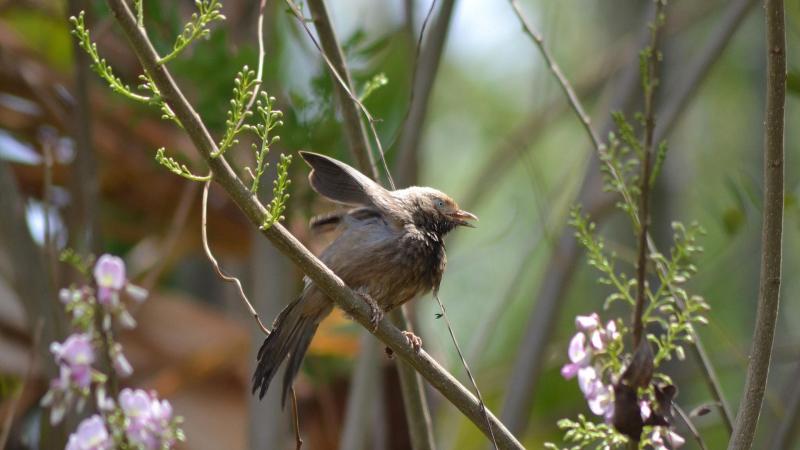
- Avoid wearing bright-coloured clothes. Go for natural or darker shades such as camouflage, grey or black.
- Get a lightweight binocular. Choosing a lens with a wide Field of View (FOV) is ideal. FOV is the extent of observing subjects from a point in the camera. Wider the view, clearer the birds are seen.
- Avoid sudden, jerky movements. They startle the birds, ending with the birds flying away. Try to swing your binocular slowly. The closer you approach a bird, the quieter you should be.
- Go early in the morning. Most birds come out during the sunrise, as it warms up insects and provides them prey. Hence, the chances of viewing a wide variety of birds are higher during this time.
- Get a bird guide. Bird guides are small booklets that have information about birds found in a region, their sounds, the food they eat and the time of migration. Having a guide is a good way to build your knowledge while birding.
- Have a notepad. Write down the details of the birds you watched and the sound of their calls. These details help in accurate identification.
- Bird watching is all about having patience. Wait for birds to arrive patiently, as beautiful flocks come only at the right time and weather. Every steady step in birding will give a cherishable experience.
Birdwatching, or birding, is a hobby that is increasingly gaining traction. It is the art of observing birds in their natural environment and entails leaving your comfort zone, being highly patient and following a good code of conduct. Birdwatching can be enjoyed by everyone, irrespective of age or qualification. Live in a city and do not have the luxury of going to the wilderness? Well, your windows too can give a peek into the world of birds. All it takes is your mind and the right time to enjoy their antics.
Every year, the 12th of November is observed as National Birdwatching Day, to mark the birth anniversary of India’s legendary ornithologist, Salim Ali. Also known as the ‘Birdman of India’, he has authored several books on birds of India and has popularised the field of ornithology. He played a key role in the working of Bombay Natural History Society and in setting up and preserving many wildlife sanctuaries in the country. Through his work, Ali has inspired many young ornithologists to study the rich diversity of birds in India.
It is estimated that nearly 1250 bird species exist in India, including migratory and resident birds. Over the past few years, statistics collected have revealed a dynamic trend in migration, habitat degradation, bird diversity, and other related ecological issues facing these winged creatures.
Regardless of where or when you watch birds, an intimate connection with mother Nature follows. On this national birdwatching day, try birding for a change and see what windows it opens up for you when you sit beside your window looking at the world through a binocular.
7 proven tips for successful birdwatching

Here’s what you should know before you start birding:
Size and shape - Have a bird as an example and compare its size and the shape of its body or beak with the new ones (For example, comparing a parrot with a lovebird or macaw).
Colour - Find the dominant colour of a bird and then notice its identification marks (For example, a pigeon is grey-coloured majorly, with short neck and bills).
Habitat - Know about the places where a bird comes from and how long it takes to travel to a particular region. Also, understand its seasonal migratory times (For example, Amur falcon is a long migrant that travels from Mongolia to Southern Africa during the winters, passing through the borders of India and Sri Lanka).
Behaviour patterns - An interesting, yet important aspect of birdwatching key is to study its movements, actions, wing-flapping motions, nesting and egging behaviours, speed, and type of flying. This also helps you to remember the details of the birds you observed in-depth (For example, penguins cannot fly whereas hummingbirds fly in the opposite direction).





